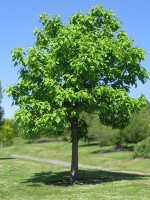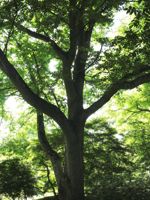Mon-Fri 9am - 5pm Mountain time
Manchurian Walnut vs Northern Catalpa (Cigar Tree)
Catalpa speciosa
Juglans mandshurica
NOT AVAILABLE THIS SEASON - MIGHT RETURN
NOT AVAILABLE THIS SEASON - MIGHT RETURN
Northern Catalpa is a striking feature tree with showy flowers, and very large leaves. Its orchid-like flowers are white with yellow and purple accents, and they have a pleasant fragrance. They bloom from late spring to early summer and can last up to two weeks, attracting hummingbirds and pollinators. The leaves are very large, ranging from 15-30 cm long, 12-20 cm wide, forming a canopy that makes it a good shade tree.
They can tolerate dry conditions as well as standing water, air pollution, and salt. These factors and its beauty contribute to its growing popularity as both a boulevard and ornamental tree in colder areas.
Northern Catalpa produces long bean-like capsules and are sometimes called the Cigar Tree in reference to this fruit.
Manchurian Walnut is a large, broad and often multi-stemmed tree with ornamental qualities. This tree produces large, thick-shelled nuts that ripen in the fall. These edible walnuts are reportedly difficult to crack open. They are useful for attracting wildlife, especially squirrels.
The Manchurian Walnut contains and exudes much lesser quantities of allelopathic compounds, such as juglone (common to walnuts), that may prevent or impair growth of nearby plants. Therefore, it is commonly embraced as a safe walnut to plant.
There are reports of rare this species surviving winters to -45C with specimens growing and thriving in Alaska and Edmonton.
There is no regular supply of this species. It is rare and not produced each year.

